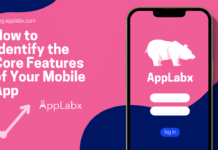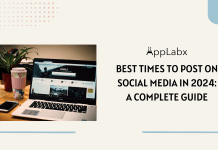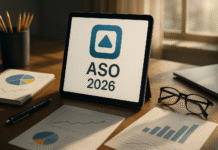Key Takeaways
- Craft concise, value-driven subject lines that create curiosity, urgency, or exclusivity to encourage opens.
- Personalize subject lines with names or past interactions to make your emails more relevant and engaging.
- Test and optimize subject lines through A/B testing to continually improve your email open rates and performance.
Email marketing remains one of the most powerful tools in digital marketing today.
Despite the rise of social media and other communication channels, email continues to generate high engagement rates, with studies showing that 81% of marketers believe email is the most effective channel for customer acquisition.
However, the success of any email marketing campaign hinges on one crucial element: the subject line.

The subject line is the first impression your email makes on a recipient. It is the gateway to your email’s content and determines whether or not your message will even be opened.
With inboxes flooded daily with countless emails—ranging from promotional offers to important notifications—capturing the recipient’s attention is no easy feat.
In fact, studies suggest that 47% of email recipients decide whether to open an email based solely on the subject line. This means that your subject line is not just an afterthought; it is the deciding factor in whether your email will be seen or ignored.
Crafting email subject lines that encourage opens is both an art and a science.
The best subject lines are those that not only grab attention but also compel action. A well-written subject line must be concise, compelling, and relevant to the recipient.
It needs to create curiosity, urgency, or a sense of personal value, all while adhering to the best practices that prevent your email from landing in the dreaded spam folder.
But how do you write subject lines that stand out in a crowded inbox? What elements should you focus on to make your emails irresistible to your audience? How do you avoid common mistakes that could sabotage your efforts?
In this comprehensive guide, we will explore the key strategies for writing email subject lines that get opened. From understanding the psychology behind why people open emails to learning proven techniques for crafting catchy and engaging subject lines, this blog will equip you with everything you need to boost your email open rates.
We’ll cover the best practices, common pitfalls to avoid, and how you can leverage data to optimize your subject lines for maximum impact.
By the end of this guide, you’ll have a solid understanding of how to create subject lines that not only grab attention but also drive engagement and conversions. Whether you are a seasoned marketer or just starting with email campaigns, mastering the art of writing effective subject lines will significantly improve the performance of your emails. So, let’s dive into the essentials of crafting subject lines that get results.
But, before we venture further, we like to share who we are and what we do.
About AppLabx
From developing a solid marketing plan to creating compelling content, optimizing for search engines, leveraging social media, and utilizing paid advertising, AppLabx offers a comprehensive suite of digital marketing services designed to drive growth and profitability for your business.
AppLabx is well known for helping companies and startups use Email Marketing to drive web traffic to their websites and web apps.
At AppLabx, we understand that no two businesses are alike. That’s why we take a personalized approach to every project, working closely with our clients to understand their unique needs and goals, and developing customized strategies to help them achieve success.
If you need a digital consultation, then send in an inquiry here.
How to Write Email Subject Lines That Get Opened
- Understanding the Science Behind Email Subject Lines
- Best Practices for Writing Email Subject Lines
- Common Mistakes to Avoid in Email Subject Lines
- A/B Testing and Optimizing Your Email Subject Lines
- Examples of High-Performing Email Subject Lines
1. Understanding the Science Behind Email Subject Lines
Writing email subject lines that get opened isn’t just about creativity—it’s about understanding the psychological and behavioral triggers that influence recipients’ decisions. Successful subject lines often rely on human psychology and the way people process information. By delving deeper into the science behind email subject lines, we can uncover the secrets that drive open rates and engagement. This section will explore key psychological principles and the factors that play a role in crafting compelling subject lines.
Psychology of Email Opens
- Curiosity and Intrigue
- Humans are naturally curious creatures. A subject line that piques curiosity encourages the recipient to open the email to learn more.
- Example: “This One Trick Will Change Your Morning Routine” taps into curiosity by hinting at a secret or a valuable piece of advice.
- Curiosity-driven subject lines often perform well in industries like health, productivity, or self-improvement, where the promise of a “secret” or an “insight” grabs attention.
- Fear of Missing Out (FOMO)
- FOMO is a powerful psychological trigger, especially in the context of time-sensitive offers or limited availability.
- Subject lines that invoke urgency or scarcity motivate recipients to act quickly.
- Example: “Last Chance: 20% Off Ends Tonight!” taps into the fear of losing out on a deal, prompting immediate action.
- FOMO works particularly well in eCommerce, event marketing, or limited-time offers.
- Reciprocity and Value
- The principle of reciprocity suggests that people are more likely to open an email if they believe they will gain something of value.
- Value-oriented subject lines promise a benefit, such as a free resource, discount, or exclusive information.
- Example: “Download Your Free Guide to Improve Email Marketing” offers something for free in exchange for the recipient’s attention, making it enticing.
- This principle is effective in lead generation, product demos, and educational content.
What Makes a Great Subject Line?
- Clarity Over Cleverness
- While creativity is important, clarity should always take precedence. Recipients should immediately understand what your email is about without having to guess.
- Example: “How to Build a Winning Social Media Strategy” is clear, direct, and leaves no room for confusion.
- The clearer the subject line, the better your chances of getting the email opened—especially for time-strapped recipients.
- Conciseness and Brevity
- With mobile devices accounting for a significant portion of email opens, it’s essential to keep subject lines short and to the point.
- Ideal subject lines are between 40-60 characters. Anything longer may get cut off on smaller screens, decreasing impact.
- Example: “5 Simple Ways to Boost Your Email Open Rates” is succinct, making it easy for recipients to read at a glance.
- Action-Oriented Language
- Using strong verbs in your subject line makes it more compelling. Action-oriented subject lines create a sense of urgency and prompt recipients to take action immediately.
- Example: “Start Your Free Trial Today” clearly tells the recipient what to do next and conveys urgency.
- Action verbs like “discover,” “boost,” “get,” and “learn” inspire readers to take the next step.
The Power of Personalization
- Using the Recipient’s Name
- Personalization in email subject lines is a proven tactic to increase open rates. Including the recipient’s name or other personal details makes the email feel more relevant and engaging.
- Example: “John, You’ve Got 3 New Features to Explore” feels more tailored and grabs attention by addressing the reader directly.
- Personalization works well in customer retention emails, loyalty programs, or any communication that targets individuals rather than a mass audience.
- Behavioral Segmentation
- Beyond simply using names, personalized subject lines based on past behavior or preferences are highly effective. If you know what a recipient has clicked on or purchased in the past, use that information to craft a subject line that speaks to their interests.
- Example: “Your Recommended Products Based on Your Last Purchase” shows that you understand the recipient’s needs, increasing the likelihood of an open.
- This approach is especially beneficial for eCommerce, SaaS platforms, or any business offering personalized recommendations.
Why Emotions Matter in Subject Lines
- Appealing to Emotions
- People often make decisions based on emotions rather than logic. Effective subject lines tap into emotional triggers like excitement, joy, fear, or surprise.
- Example: “Don’t Miss Out on Our Biggest Sale Ever!” uses excitement and fear of missing out to create an emotional response.
- Subject lines that invoke positive emotions (like happiness or anticipation) tend to boost open rates, while fear-based tactics (like scarcity or urgency) work for time-sensitive offers.
- Creating a Sense of Urgency
- Urgency is a powerful motivator in email marketing. Subject lines that emphasize time constraints or limited opportunities drive recipients to act quickly.
- Example: “Hurry! 24 Hours Left for 50% Off” leverages urgency to encourage immediate action.
- Urgent subject lines are effective in promotions, events, flash sales, or anything that requires immediate action.
The Role of Curiosity and Suspense
- Building Suspense
- People love to discover new information, especially when it’s promised in a way that leaves them wanting more. Suspenseful subject lines are designed to arouse curiosity and lead the reader to want to open the email to uncover the full story.
- Example: “You Won’t Believe What We’ve Just Launched” creates a sense of suspense that encourages the recipient to open the email and satisfy their curiosity.
- This strategy works best in industries like technology, entertainment, and fashion, where innovation and new products are key selling points.
- Cliffhangers and Teasers
- Just like in storytelling, cliffhangers in subject lines can be used to leave the recipient hanging, prompting them to open the email for the rest of the story or deal.
- Example: “You’re Invited to the Exclusive Event—But Only If…” adds a sense of mystery and exclusivity, prompting interest.
- Teasing valuable content or information—such as a new product, an exclusive invitation, or a special offer—keeps recipients engaged and ready to open.
Leveraging the “Power Words” in Subject Lines
- Power Words That Spark Action
- Certain words in subject lines can be extremely effective at catching the eye and sparking action. Power words convey urgency, exclusivity, or a strong sense of value.
- Examples of effective power words include:
- “Limited,” “Exclusive,” “Free,” “Now,” “Instantly,” “Boost,” “Unlock”
- Example: “Unlock Your Free Trial Today” uses the word “Unlock” to suggest access to something valuable and immediate.
- These words should be used thoughtfully and strategically to enhance the message without sounding over-the-top or spammy.
Understanding these psychological principles will help you craft subject lines that not only grab attention but also drive action. By using curiosity, urgency, emotional appeal, and personalization, you can create compelling subject lines that encourage recipients to open your emails and engage with your content. In the following sections, we will dive deeper into practical strategies for writing these effective subject lines and common mistakes to avoid.
2. Best Practices for Writing Email Subject Lines
Writing email subject lines that consistently drive high open rates requires a deep understanding of both psychological triggers and effective writing strategies. In this section, we’ll explore the best practices for crafting email subject lines that are compelling, attention-grabbing, and optimized for success. These strategies cover everything from brevity and personalization to creating urgency and conveying value. Let’s break down the essential elements that contribute to the success of an email subject line.
Keep It Short and Sweet
- Optimal Length for Maximum Impact
- Subject lines that are concise and to the point are more likely to get noticed. The ideal subject line length typically falls between 40-60 characters.
- Emails with subject lines that exceed this range risk getting cut off, especially when viewed on mobile devices.
- Example: “Get Your Free Ebook in Minutes” (49 characters) versus “Download the Complete Guide to Understanding Digital Marketing in Just a Few Minutes” (97 characters), where the latter gets truncated on mobile screens.
- Focus on Clarity Over Length
- It’s better to have a brief, clear subject line than one that’s overly descriptive but confusing.
- Short subject lines work well because they’re easier to read quickly and don’t overwhelm the recipient.
- Example: “Boost Your Sales with These 5 Tips” is clear, direct, and quick to understand.
Personalize Your Subject Line
- Incorporate the Recipient’s Name
- Personalized subject lines significantly increase open rates. Including the recipient’s name in the subject line gives a sense of individuality and relevance.
- Personalized subject lines stand out in an inbox and make the email feel more tailored, which builds trust and encourages engagement.
- Example: “Sarah, Here’s a Special Offer Just for You” speaks directly to the recipient and makes the email feel personal.
- Segment Your Audience and Tailor Content
- Personalization doesn’t just stop at names. Segmenting your audience based on previous behaviors, purchase history, or location can help craft more targeted subject lines.
- Example: “John, You Left Items in Your Cart – Complete Your Purchase” is highly personalized and taps into a specific action.
- Audience segmentation can also include targeting based on demographics, interests, or previous interactions, helping to deliver more relevant offers.
Create a Sense of Urgency
- Use Time-Sensitive Language
- Subject lines that convey urgency encourage recipients to act quickly. Urgency-driven subject lines create a fear of missing out (FOMO), prompting the reader to open the email immediately.
- Example: “Hurry! 48 Hours Left to Save 30%” leverages time-sensitive language to create urgency.
- Phrases like “Last Chance,” “Ends Soon,” or “Limited Time Only” compel the recipient to act now rather than postponing the action.
- Highlight Scarcity or Exclusivity
- Scarcity is another powerful motivator. Subject lines that emphasize limited availability can prompt quick responses from recipients who don’t want to miss out.
- Example: “Only 5 Spots Left – Reserve Your Place Now” creates a sense of exclusivity and urgency.
- This works particularly well in event-based emails, promotions, or special offers where recipients are aware that they are getting something exclusive.
Be Clear and Specific
- Communicate the Value Upfront
- Avoid vague or generic subject lines that don’t provide enough information about what’s inside the email. Be clear about the value the recipient will get.
- Example: “Save 20% on Your Next Purchase” clearly communicates the benefit upfront, making it easier for the recipient to decide whether or not to open the email.
- Subject lines that convey specific benefits or information increase the likelihood of higher open rates.
- Avoid Clickbait
- While you want your subject line to grab attention, it should not mislead the recipient. Clickbait tactics that over-promise or under-deliver can lead to distrust and high unsubscribe rates.
- Example: “You Won’t Believe What We’ve Just Released” might be too vague and ultimately disappointing if the content inside doesn’t match the expectation.
- Be transparent and set realistic expectations for the email content.
Use Numbers and Lists
- Leverage the Power of Numbers
- Subject lines that feature numbers or lists tend to stand out in the inbox. Numbers provide structure and make the subject line more digestible, signaling to recipients that they’ll receive easily consumable content.
- Example: “5 Proven Strategies to Grow Your Business” is a simple, clear subject line that promises valuable, easy-to-implement tips.
- Including numbers also implies a promise of specific, actionable advice, which tends to be very appealing to recipients looking for quick solutions.
- “How-To” Subject Lines
- “How-to” subject lines are highly effective because they promise practical value and actionable insights.
- Example: “How to Improve Your Email Marketing in 7 Days” is a specific, value-driven subject line that promises a clear benefit within a short timeframe.
- This works well in industries where recipients are looking for solutions to problems or seeking to learn something new.
Avoid Spammy Words and Overuse of Punctuation
- Be Careful with Common Spam Trigger Words
- Certain words are commonly flagged by email service providers as potential spam. Using phrases like “Free,” “Guaranteed,” “No Cost,” or “100%,” especially in all caps or combined with excessive punctuation, can reduce deliverability and cause your emails to end up in the spam folder.
- Example: “100% FREE!!! LIMITED TIME OFFER!!!” is an example of a spammy subject line that may cause emails to be marked as spam.
- Instead, focus on value-driven language and limit the use of exclamation points or phrases that might trigger spam filters.
- Keep Punctuation and Capitalization Balanced
- Overusing capital letters or excessive punctuation (such as multiple exclamation points) can seem aggressive or unprofessional.
- Example: “Huge Sale on All Products!!!” can appear as spam to recipients and spam filters alike. Instead, try: “Huge Sale on All Products – Shop Now.”
Test and Optimize
- A/B Testing Your Subject Lines
- Regularly test different subject lines to identify which ones resonate best with your audience. A/B testing allows you to refine your approach and understand what works best in terms of open rates, click-through rates, and conversions.
- Example: Test variations of a subject line like “Save 20% on Your Order” vs. “Get 20% Off Your Next Purchase” to see which one yields better engagement.
- Track the performance of each subject line variation and use the insights to optimize future emails.
- Analyze Results and Refine Strategies
- Look at the data from your email campaigns to identify patterns and trends. What types of subject lines are your audience responding to? What time of day or week do they open your emails most?
- Continuously refining your approach based on real-world data will ensure that your subject lines stay relevant and effective over time.
Test Different Approaches for Different Campaigns
- Tailor Subject Lines to Campaign Goals
- Different types of email campaigns require different approaches. Whether you’re running a promotion, a product launch, a newsletter, or an event invitation, your subject line should reflect the specific goal of the campaign.
- Example: For a product launch: “Introducing Our Newest Product – Get 10% Off Today!” vs. for a newsletter: “Your Monthly Roundup of Marketing Insights” – each requires a different approach.
- Tailor your subject lines to fit the tone and purpose of the email to better align with recipient expectations.
Mastering the best practices for writing email subject lines is key to improving open rates and boosting overall email marketing success. By keeping your subject lines clear, concise, and compelling—while leveraging personalization, urgency, and value—you can create email campaigns that engage and convert your audience effectively. Regular testing and optimization ensure that your subject lines evolve with your audience’s preferences and behaviors, giving you a significant edge in the competitive world of email marketing.
3. Common Mistakes to Avoid in Email Subject Lines
Crafting the perfect email subject line is a critical component of any email marketing campaign. However, there are several common mistakes that marketers often make when writing subject lines, which can significantly hinder open rates, engagement, and overall campaign effectiveness. In this section, we’ll explore the most frequent pitfalls and how to avoid them to ensure your email subject lines are optimized for success.
Being Too Vague or Generic
- Lack of Specificity
- Vague subject lines fail to provide recipients with a clear idea of what the email is about, leading to confusion and reduced engagement.
- Generic subject lines can come across as spammy and often fail to spark any curiosity or interest.
- Example: “Update from Us” or “Check This Out” doesn’t offer any tangible benefit or urgency, leaving recipients with no reason to open the email.
- No Clear Value Proposition
- If your subject line doesn’t indicate what value or benefit the recipient will get, they’re less likely to engage with it.
- Example: “Important Message Inside” is vague and doesn’t entice the recipient to open the email. A better alternative could be: “Unlock Exclusive Tips for Your Business Inside.”
- Always aim to clearly communicate what the recipient will gain by opening your email, whether it’s valuable information, a special offer, or useful insights.
Overusing Spammy Words and Phrases
- Common Spam Trigger Words
- Certain words are flagged by email providers as spam triggers. Overusing these words in subject lines can send your emails straight to the spam folder, decreasing deliverability.
- Words like “Free,” “Guaranteed,” “No Cost,” “100%,” and phrases like “This Is Not A Scam” are typical offenders that might hurt your email’s reputation.
- Example: “100% FREE!!! Limited Offer” might get caught by spam filters. A better approach would be: “Exclusive Offer Just for You: 30% Off Your Next Purchase.”
- Overuse of Symbols and Punctuation
- Using excessive punctuation marks, especially multiple exclamation points or symbols, can make your subject line appear unprofessional or spammy.
- Example: “!!!Hurry!!! Last Chance!!!” can come across as desperate or aggressive, which often leads to distrust from the recipient. Instead, try: “Hurry – Last Chance for 20% Off Your Order.”
- Avoid Overly Promotional Language
- Subject lines that sound too sales-driven may deter recipients. Overly promotional language can cause recipients to assume that the email is purely a sales pitch, leading them to ignore it.
- Example: “Buy Now – Limited Time Only” can feel pushy. Instead, consider: “How to Save 20% on Your Next Purchase – Details Inside” for a more subtle and engaging approach.
Being Too Long or Overly Complex
- Subject Lines That Are Too Long
- Lengthy subject lines, particularly those over 60 characters, may get cut off in email clients, especially on mobile devices, which most people use to check emails.
- Example: “Don’t Miss Out on Our Biggest Sale of the Year – 50% Off Everything!” is a great offer but too long. A more concise option would be: “50% Off Everything – Big Sale Ends Soon!”
- Complexity and Overuse of Jargon
- Complex subject lines that use industry jargon or unclear messaging can confuse recipients. The goal is to make your subject line as straightforward and easy to understand as possible.
- Example: “Exclusive Product Launch: Revolutionary New Tool for Streamlining Workflow Efficiency” could be simplified to: “Introducing Our New Tool to Boost Your Workflow.”
- Avoid jargon or overly complicated phrasing and focus on simplicity and clarity to make sure your message resonates with a wide audience.
Being Too Pushy or Aggressive
- Overbearing Urgency
- While creating a sense of urgency can drive action, overdoing it can backfire. Subject lines that are overly aggressive or constantly use time-sensitive language can create fatigue and make recipients feel like they’re being pressured.
- Example: “Act Now or Miss Out Forever!” might seem too harsh and lead to distrust. A more effective approach might be: “Hurry – Your Exclusive Offer Ends Soon.”
- Reserve urgency for special occasions, limited offers, or time-sensitive actions, and balance it with a sense of value or benefit for the recipient.
- Hard Sell Tactics
- Subject lines that come across as a hard sell, such as “Buy Now” or “Don’t Miss Out on This Deal,” often turn recipients off. Instead, focus on providing value or solving a problem.
- Example: “Act Now: 50% Off Everything” can be perceived as too pushy. A better option might be: “Here’s 50% Off Your Next Purchase – Treat Yourself Today.”
- Keep the tone friendly and conversational, focusing on how the offer or content will benefit the recipient rather than forcing them into a purchase.
Misleading or Clickbait Subject Lines
- Overpromising and Underdelivering
- While it’s tempting to create clickbait subject lines that promise something sensational, doing so can erode trust and damage your brand’s reputation. If the content of your email doesn’t match the hype in the subject line, recipients may feel misled, leading to higher unsubscribe rates and lower trust.
- Example: “You’ve Won $1,000 – Open to Claim” is an example of a clickbait subject line that, when the email is opened, might not deliver the promised reward, leading to frustration.
- Ensure your subject lines align with the content of your email. Be honest and transparent with your audience to foster long-term trust.
- Inconsistent Messaging
- When the subject line promises one thing but the email content delivers something entirely different, recipients may feel deceived. Consistency is key for maintaining credibility.
- Example: A subject line like “Learn How to Grow Your Email List in 10 Days” would feel inconsistent if the content of the email discusses product discounts instead of email growth tips.
- Keep your messaging consistent, ensuring that the subject line accurately reflects the content and value provided inside the email.
Lack of Testing and Optimization
- Failing to A/B Test Subject Lines
- A/B testing is crucial for optimizing email subject lines. Without testing, it’s difficult to know what works best for your audience. Marketers who skip A/B testing often miss out on valuable insights and fail to improve their open rates.
- Example: Sending the same subject line “Special Offer Inside” to all recipients without testing different variations will prevent you from understanding what your audience truly responds to.
- Conduct regular A/B tests with variations in wording, tone, length, and personalization to identify the best-performing subject lines for your specific audience.
- Ignoring Performance Metrics
- Not reviewing and analyzing the performance of your subject lines can lead to missed opportunities for improvement. Open rates, click-through rates, and conversion rates provide valuable insights into how well your subject lines are performing.
- Example: If you notice that subject lines with urgency (“Only 2 Hours Left!”) perform better, consider incorporating more urgency into future campaigns.
- Use the data from your email marketing platform to continually optimize and refine your subject lines based on recipient behavior.
Ignoring Mobile Optimization
- Subject Lines Not Optimized for Mobile
- With the majority of emails being opened on mobile devices, it’s critical to optimize your subject lines for smaller screens. Subject lines that are too long or unclear on mobile can result in missed opportunities for engagement.
- Example: A subject line like “Check Out Our Latest Collection of Stylish, Comfortable, and Affordable Shoes for Every Occasion” is likely to get cut off on a mobile device. Instead, try: “New Shoe Collection – Shop Now.”
- Always test how your subject lines appear on mobile devices to ensure they are fully visible and convey the message clearly.
Failing to Create a Clear Call to Action
- No Action-Oriented Language
- A subject line should always encourage the recipient to open the email by providing a clear call to action (CTA). If your subject line is passive or doesn’t hint at what the recipient should do next, it will likely be ignored.
- Example: “Learn More About Our Latest Updates” lacks a clear, actionable CTA. A more compelling subject line would be: “Discover How Our New Updates Can Help You Save Time – Open Now.”
- Including actionable phrases like “Learn,” “Discover,” “Get Started,” or “Shop Now” can motivate the recipient to engage with the content.
Avoiding these common mistakes when crafting email subject lines can significantly improve your open rates and overall campaign success. By focusing on clarity, relevance, value, and testing, you can avoid pitfalls that could hurt your email marketing efforts and ensure that your subject lines are optimized to drive higher engagement.
4. A/B Testing and Optimizing Your Email Subject Lines
A/B testing is an essential strategy for refining your email subject lines and improving your email marketing performance. By continuously testing and optimizing your subject lines, you can discover what resonates most with your audience, increase open rates, and improve overall campaign effectiveness. This process involves comparing two or more variations of a subject line and determining which one drives the most engagement. In this section, we’ll dive deep into how to perform A/B testing for email subject lines, common test variables, and how to optimize based on the results.
Understanding A/B Testing for Email Subject Lines
- What is A/B Testing?
- A/B testing, also known as split testing, is a method where two variations of an email subject line are tested against each other to determine which one performs better in terms of open rates, click-through rates, or conversions.
- The basic idea is to send one variation (Version A) to one segment of your audience and another variation (Version B) to a different segment, then analyze the results to see which version yielded better results.
- A/B testing helps remove guesswork from your email marketing strategy, enabling you to make data-driven decisions.
- Why A/B Testing is Important for Email Subject Lines
- Subject lines are the first thing recipients see, and they play a significant role in whether an email is opened or ignored.
- Testing allows you to experiment with different messaging approaches, word choices, and emotional triggers, so you can find the best way to communicate with your audience.
- Regularly testing your subject lines ensures that your email campaigns stay fresh, relevant, and optimized for maximum engagement.
Common Variables to Test in Your Subject Lines
- Length of the Subject Line
- Test subject lines of varying lengths to see what works best for your audience. Some audiences may respond better to shorter, punchier subject lines, while others may prefer more detailed, descriptive lines.
- Example:
- Version A: “Unlock 30% Off Your Next Purchase” (shorter)
- Version B: “Get 30% Off Your Next Purchase – Limited Time Only!” (longer)
- You might find that shorter subject lines perform better, especially on mobile devices, where space is limited.
- Personalization vs. Generic Subject Lines
- Personalizing a subject line with the recipient’s name or other personalized details can help make the email feel more relevant and targeted.
- Example:
- Version A: “John, You’re Missing Out on 20% Off!” (personalized)
- Version B: “Don’t Miss Your 20% Discount!” (generic)
- Personalization often leads to higher open rates as it adds a personal touch and makes the recipient feel valued.
- Tone and Emotion
- The tone of your subject line—whether it’s urgent, friendly, or informative—can impact its success. Experiment with different emotional triggers to see what resonates most with your audience.
- Example:
- Version A: “Hurry, Offer Ends Today!” (urgent)
- Version B: “Save 20% on Your Next Purchase!” (casual)
- Testing different tones will help you understand if your audience responds better to urgency, excitement, or a more laid-back approach.
- Use of Numbers and Lists
- Subject lines that include numbers or lists tend to catch the eye and provide a sense of structure, making them easy to digest.
- Example:
- Version A: “5 Tips to Improve Your Email Marketing” (numbered)
- Version B: “Tips to Improve Your Email Marketing” (non-numbered)
- Testing variations with and without numbers helps determine which format your audience finds more appealing.
- Inclusion of Offers or Benefits
- Subject lines that clearly communicate an offer or benefit tend to perform well because they give the recipient an immediate reason to open the email.
- Example:
- Version A: “Save 30% on Your Next Purchase – Limited Time Only!” (offer-focused)
- Version B: “Here’s How You Can Save 30% on Your Next Purchase” (value-driven)
- Testing variations of benefit-driven subject lines helps identify which value propositions drive the most opens.
- Urgency vs. Long-Term Value
- Urgency-based subject lines encourage immediate action, while long-term value subject lines offer something to look forward to. Testing these two approaches can provide insight into your audience’s preferences.
- Example:
- Version A: “Last Chance – 50% Off Ends Today!” (urgency)
- Version B: “Claim Your 50% Discount Before It’s Gone!” (long-term focus)
- Determine whether your audience prefers quick action or if they respond better to benefits that unfold over time.
How to Conduct an Effective A/B Test
- Set Clear Goals for the Test
- Before conducting an A/B test, define what you want to achieve. Are you testing for higher open rates, better click-through rates, or improved conversions? Having a clear goal will help you measure the success of your test accurately.
- Example: If you’re testing subject lines for open rates, your goal is to identify which version drives more people to open the email. If testing for click-through rates, focus on which subject line prompts more engagement with the email content.
- Select a Sample Size
- To get statistically significant results, you need to test on a large enough sample size. Aim for at least 1,000 recipients per variation to ensure that the results are reliable and not skewed by small sample sizes.
- Ensure that both variations are sent to similar segments of your audience to ensure consistency and fairness in the test results.
- Test One Variable at a Time
- For an accurate comparison, test only one variable (e.g., subject line length, personalization, or tone) at a time. Testing multiple variables simultaneously can make it difficult to determine which specific change led to the result.
- Example: If you test both personalization and subject line length at the same time, you won’t know whether the personalization or the length of the subject line influenced the results.
- Ensure Equal Distribution of Variations
- To avoid biased results, make sure the two versions of your subject line are sent to equivalent segments of your audience. This ensures that the test is fair and that external factors do not skew the results.
- Analyze the Results
- Once the test has been completed, evaluate the performance of each subject line variation based on your defined goals. Use metrics such as open rates, click-through rates, and conversions to determine which subject line performed better.
- Example: If you were testing urgency-based subject lines, compare the open rates between the two variations to see which one generated the most interest.
- Implement the Winning Variation
- Once you’ve identified the best-performing subject line, implement the winning variation in your future campaigns. However, don’t stop testing—A/B testing should be an ongoing process to continuously improve your email marketing strategies.
Best Practices for A/B Testing Email Subject Lines
- Test Subject Lines Frequently
- A/B testing should not be a one-time event. Regularly testing different subject lines ensures that your email marketing remains fresh and engaging. Testing different elements of your subject lines over time will help you identify trends and preferences within your audience.
- Use Your Insights to Refine Other Campaign Elements
- The insights gained from A/B testing your subject lines can be applied to other elements of your email campaigns, such as content, design, and call-to-action (CTA). If certain tones or language styles resonate with your audience, consider incorporating these into the body of your emails as well.
- Keep Your Audience in Mind
- Remember that your audience’s preferences can change over time. Be sure to adjust your subject lines to align with shifts in tone, language, or offers that may be more relevant or appealing.
- Example: During the holidays, you might test more festive and urgent subject lines like “Holiday Deals End Soon!” but during the summer, a more relaxed and value-focused subject line might perform better.
Optimizing Based on A/B Test Results
- Learn from Low-Performing Subject Lines
- While it’s important to celebrate the successes of your A/B tests, also pay attention to the subject lines that performed poorly. Analyze why they didn’t resonate with your audience. Were they too vague? Did they lack urgency or personalization? Understanding these mistakes helps refine your future subject line strategies.
- Incorporate Learnings into Future Campaigns
- The results of your A/B tests should inform future email campaigns. If you find that a certain tone, length, or call to action drives higher engagement, integrate those insights into your next batch of subject lines.
- Test New Strategies Periodically
- Your audience’s preferences may evolve over time, so periodically testing new strategies and trends is important to stay ahead of the curve. Even if you’ve found a winning formula, don’t become complacent—continue experimenting with fresh approaches to keep your emails engaging and relevant.
Conclusion
A/B testing and optimizing your email subject lines is a powerful strategy for increasing open rates and improving overall email marketing performance. By systematically testing different variables, analyzing results, and continuously optimizing, you can refine your approach and achieve better outcomes with every email campaign. Remember that A/B testing is an ongoing process, and staying open to experimenting with new techniques will keep your subject lines relevant and compelling for your audience.
5. Examples of High-Performing Email Subject Lines
Creating compelling email subject lines is essential for ensuring your emails are opened and read. The right subject line can spark curiosity, highlight the value of your offer, and create a sense of urgency, leading to higher open rates and better engagement. In this section, we’ll examine examples of high-performing subject lines across various industries, breaking them down to highlight the key elements that contribute to their success.
Subject Lines That Leverage Urgency and Scarcity
- Time-Sensitive Offers
- Urgency in subject lines prompts recipients to act quickly, which can significantly increase open rates and engagement. These subject lines create a sense of urgency, making the recipient feel like they could miss out on something valuable.
- Example 1: “Hurry! 48-Hour Flash Sale – 50% Off Everything”
- Example 2: “Last Chance! Your 30% Discount Expires Tonight”
- Key Elements:
- Time-sensitive language such as “hurry,” “last chance,” and “expires” signals urgency.
- Clear benefit of a significant discount, motivating the recipient to act quickly.
- Limited-Time Offers
- Creating a sense of scarcity, like a limited-time offer, encourages recipients to take action before the opportunity vanishes.
- Example 1: “This Weekend Only: Get Free Shipping on All Orders”
- Example 2: “Only 12 Hours Left to Claim Your Discount”
- Key Elements:
- “Only” and “12 hours left” emphasize the scarcity of the offer.
- The mention of a specific benefit, like free shipping or discounts, adds clear value.
Subject Lines That Create Curiosity
- Intriguing and Mysterious Subject Lines
- Subject lines that spark curiosity or intrigue can increase open rates as they make recipients want to learn more.
- Example 1: “You Won’t Believe What We Have for You”
- Example 2: “Something Special Is Waiting Inside”
- Key Elements:
- The use of mystery phrases like “You won’t believe” or “something special” encourages curiosity without revealing too much.
- These subject lines create a sense of excitement and anticipation, prompting recipients to open the email.
- Teasing Content and Offers
- Teasing the content of the email or an exclusive offer can entice the recipient to click open to discover the full offer or information.
- Example 1: “Your Secret Discount Is Inside – Find Out How Much You Save”
- Example 2: “The One Thing You Didn’t Know You Needed”
- Key Elements:
- Phrases like “secret” and “inside” add an element of exclusivity.
- The promise of a hidden or unexpected benefit boosts intrigue.
Subject Lines Using Personalization
- Personalized with Name or Details
- Personalization, such as including the recipient’s name or referencing their preferences, can significantly increase open rates. This makes the email feel more relevant and tailored to the individual.
- Example 1: “Sarah, Your Exclusive 20% Discount Awaits”
- Example 2: “John, We’ve Picked Products Just for You”
- Key Elements:
- Including the recipient’s name creates a sense of personalization, making the email feel more direct and engaging.
- Offering a discount or curated selection based on their preferences increases relevance and appeal.
- Reference Past Purchases or Interactions
- Personalizing subject lines based on previous interactions, such as past purchases or browsing history, can drive better engagement by offering products or services aligned with the recipient’s interests.
- Example 1: “Remember That Jacket You Loved? It’s On Sale Now”
- Example 2: “Still Thinking About That Item? It’s Back in Stock”
- Key Elements:
- A reference to past interactions, like browsing or purchases, reminds the recipient of a previous interest, increasing the likelihood of opening the email.
- The use of urgency or restocking language motivates recipients to act quickly.
Subject Lines That Offer Value
- Highlighting Discounts and Promotions
- Subject lines that clearly communicate discounts or promotions provide immediate value to the recipient, encouraging them to open the email for more details.
- Example 1: “Get 25% Off Your First Order – Limited Time Only”
- Example 2: “Unlock 50% Off Your Favorite Products”
- Key Elements:
- Mentioning a specific discount (e.g., “25% off” or “50% off”) provides immediate value to the recipient.
- The inclusion of time-sensitive language adds urgency, encouraging prompt action.
- Exclusive Offers for Subscribers
- Offering exclusive deals for subscribers or loyal customers is an excellent way to create a sense of exclusivity and make recipients feel valued.
- Example 1: “Exclusive Offer Just for You – 15% Off Your Next Purchase”
- Example 2: “VIP Access: Early Bird Discount on Our New Collection”
- Key Elements:
- Words like “exclusive” or “VIP access” make the recipient feel special and appreciated.
- Offering an early bird discount or exclusive offer increases the appeal of the email.
Subject Lines That Create a Sense of FOMO (Fear of Missing Out)
- Highlighting What They Might Miss
- FOMO-driven subject lines tap into the fear of missing out on something exciting, limited, or highly desirable.
- Example 1: “Don’t Miss Out on This Week’s Biggest Sale”
- Example 2: “Last Call! Only a Few Spots Left for Our Exclusive Event”
- Key Elements:
- The phrases “Don’t miss out” and “Last call” create a sense of urgency and encourage recipients to act quickly before they lose out.
- Highlighting a limited availability or exclusive offer increases the fear of missing out.
- Referencing Social Proof or Popularity
- Referencing a product’s popularity or how many others have already taken advantage of an offer can push recipients to act quickly to avoid being left behind.
- Example 1: “Thousands Already Signed Up – Don’t Miss Your Spot”
- Example 2: “Join the 5,000+ Customers Who’ve Already Saved Big”
- Key Elements:
- Mentioning the popularity of an offer or product shows social proof, motivating recipients to join in.
- This taps into the fear of missing out, making the recipient feel they could miss something highly popular or valuable.
Subject Lines Using Questions
- Engaging with Thought-Provoking Questions
- A question in the subject line can provoke curiosity and prompt recipients to open the email to discover the answer or solution.
- Example 1: “Ready to Save Big on Your Next Purchase?”
- Example 2: “Want to Know How to Boost Your Productivity in 5 Minutes?”
- Key Elements:
- A question directly engages the recipient by making them reflect on their needs or desires, leading them to open the email for more information.
- The questions should be relevant to the recipient’s interests or challenges to increase their curiosity.
- Challenging the Recipient’s Current Situation
- Asking a question that challenges the recipient’s current situation can encourage them to open the email to see how they can improve or solve a problem.
- Example 1: “Are You Making These Common Email Marketing Mistakes?”
- Example 2: “Tired of Missing Sales? Here’s How to Boost Your Revenue”
- Key Elements:
- These subject lines provoke self-reflection, making recipients curious about the content inside that can help them overcome a challenge or improve their situation.
- Framing the subject line as a problem and solution can significantly boost engagement.
Subject Lines Using Numbers and Lists
- Subject Lines with Lists and Tips
- Numbers in subject lines convey specific, actionable content, making it clear that the recipient will gain valuable insights in a digestible format.
- Example 1: “5 Proven Strategies to Grow Your Email List”
- Example 2: “Top 3 Ways to Boost Your SEO Ranking in 2023”
- Key Elements:
- The inclusion of numbers helps set clear expectations about the value recipients will gain.
- Lists and tips provide a structured approach, making it easy for recipients to see the benefits at a glance.
- Round Numbers to Boost Appeal
- Round numbers in subject lines tend to attract attention because they are easy to remember and provide a clean structure to the content.
- Example 1: “10 Tips to Improve Your Content Strategy”
- Example 2: “7 Reasons Why Your Business Needs a New Website”
- Key Elements:
- Round numbers like “10” or “7” are easily digestible and provide an organized, straightforward promise of content.
Conclusion
The key to crafting high-performing email subject lines is understanding what motivates your audience. By testing different strategies and leveraging the elements discussed above, such as urgency, curiosity, value propositions, personalization, and FOMO, you can create compelling subject lines that encourage recipients to open your emails. Additionally, regularly reviewing and analyzing the performance of your subject lines will help you fine-tune your approach and continually improve your email marketing efforts. Always keep the focus on what resonates most with your audience and adapt your strategies accordingly.
Conclusion
In today’s fast-paced digital world, where inboxes are flooded with emails, writing email subject lines that grab attention and get opened is more critical than ever. The subject line is the first thing a recipient sees, and it plays a significant role in determining whether your email is opened or ignored. Crafting the perfect subject line isn’t just about being clever or catchy; it’s about understanding your audience, applying the right strategies, and continuously testing and refining your approach.
As we’ve explored throughout this guide, there are several key components that contribute to creating email subject lines that compel recipients to click and engage. From leveraging psychological triggers, such as urgency, curiosity, and FOMO (fear of missing out), to personalizing the message and offering tangible value, every element of your subject line should be carefully designed to meet the needs and interests of your audience. A well-crafted subject line not only encourages an open but also sets the tone for the entire email, impacting the recipient’s overall experience with your brand.
The science behind email subject lines reveals the power of brevity, clarity, and relevance. Consumers today are inundated with information, and their time is precious. Therefore, the subject line must quickly communicate the value of the email, whether that’s through an enticing offer, valuable content, or personalized messaging. The key is to create a subject line that stands out in a crowded inbox while still aligning with the interests and expectations of your audience.
In addition to the foundational principles, we’ve discussed several best practices for writing subject lines that get opened. Testing subject lines through A/B testing, analyzing performance metrics, and continually optimizing based on results are all essential practices for refining your strategy over time. The iterative nature of testing allows you to fine-tune your messaging and adapt to changing audience preferences. It’s important to remember that even small tweaks, like adjusting the tone or experimenting with different types of offers, can have a significant impact on your open rates.
However, it’s equally important to be mindful of common mistakes that can hinder the effectiveness of your subject lines. Overusing words like “free” or “urgent,” resorting to clickbait tactics, or writing subject lines that are misleading or irrelevant to the content of your email can lead to poor open rates and damage your credibility with subscribers. Maintaining authenticity and relevance is key to building trust with your audience and ensuring your emails are welcomed rather than ignored.
One of the most powerful tools at your disposal when crafting subject lines is A/B testing. By testing different variations of your subject lines and analyzing the results, you gain valuable insights into what resonates best with your audience. Whether you’re testing the length of your subject line, the use of numbers, or the tone of the message, A/B testing provides a clear roadmap for optimizing your email marketing strategy. It’s a powerful way to continuously improve and stay ahead of the competition.
Looking ahead, the future of email subject lines will likely continue to evolve, especially as new technologies and trends emerge. With the increasing use of AI and machine learning in marketing, subject line optimization will become even more data-driven. Personalization, based on sophisticated algorithms and customer data, will likely play an even larger role in crafting highly relevant and tailored subject lines that speak directly to the needs and preferences of individual recipients.
In conclusion, the key to writing email subject lines that get opened is a combination of understanding your audience, applying proven strategies, and continuously optimizing based on data. By focusing on clarity, urgency, personalization, and value, and avoiding common pitfalls, you can craft subject lines that not only boost your open rates but also foster a stronger connection with your audience. Remember, your subject line is the first step in your email marketing journey, and when done right, it can pave the way for greater engagement, conversions, and business success.
By following the best practices outlined in this guide, from testing different approaches to leveraging the psychological triggers that influence human behavior, you’ll be well on your way to mastering the art of email subject lines. Stay committed to refining your strategy, adapt to your audience’s changing needs, and always prioritize relevance and value. Ultimately, crafting subject lines that get opened is not a one-size-fits-all process but rather an ongoing effort to fine-tune your approach and deliver emails that resonate with your audience.
If you are looking for a top-class digital marketer, then book a free consultation slot here.
If you find this article useful, why not share it with your friends and business partners, and also leave a nice comment below?
We, at the AppLabx Research Team, strive to bring the latest and most meaningful data, guides, and statistics to your doorstep.
To get access to top-quality guides, click over to the AppLabx Blog.
People also ask
What makes a good email subject line?
A good email subject line is clear, concise, and engaging. It should convey the email’s value, evoke curiosity or urgency, and be relevant to the recipient’s needs.
Why are email subject lines important?
Email subject lines are crucial as they are the first thing recipients see. They determine whether an email is opened or ignored, directly impacting open rates and engagement.
How long should an email subject line be?
An email subject line should ideally be between 40-60 characters. This ensures it’s concise yet informative, and it fits well on both mobile devices and desktop screens.
What words should I avoid in email subject lines?
Avoid words like “free,” “urgent,” or “guaranteed,” as they can trigger spam filters. Also, avoid excessive punctuation or clickbait phrases that may reduce trust.
How do I make email subject lines stand out?
Use personalization, intriguing language, and urgency. Also, try experimenting with emojis (if appropriate), strong action verbs, or numbers to draw attention.
What is the role of personalization in email subject lines?
Personalization makes the email feel tailored to the recipient. Including their name or referencing past behavior or purchases can increase open rates and make the message feel more relevant.
How can I create urgency in my email subject line?
Use time-sensitive language like “limited time,” “last chance,” or “only a few spots left” to create a sense of urgency, encouraging recipients to act quickly.
Should I use questions in email subject lines?
Yes, asking a question can spark curiosity and encourage recipients to open the email. Ensure the question is relevant to the content and resonates with the recipient’s needs.
How can I test email subject lines for effectiveness?
A/B testing is the most effective method. Send two variations of a subject line to a small sample, then measure which one performs better based on open rates and engagement.
What role does segmentation play in email subject lines?
Segmentation allows you to tailor subject lines to different audience segments. Personalized and relevant subject lines based on location, behavior, or preferences improve engagement.
Can emojis be used in email subject lines?
Yes, emojis can make your subject line stand out, but they should be used sparingly and in alignment with your brand voice. Ensure they don’t compromise readability or appear unprofessional.
How do I avoid spam filters with my subject line?
To avoid spam filters, avoid using all caps, excessive punctuation, and spammy phrases like “free” or “guaranteed.” Also, maintain a balance between promotional and informational language.
What are some examples of high-converting email subject lines?
Examples include: “Last Chance for 50% Off,” “Your Exclusive Invite Inside,” “Sarah, Claim Your Free Gift Today,” and “Only 12 Hours Left to Save.”
Why is it important to have a clear subject line?
A clear subject line communicates exactly what the email is about, ensuring that the recipient understands the value they’ll get by opening it. Clarity builds trust and encourages action.
Should I use humor in email subject lines?
Humor can work if it fits your brand and resonates with your audience. It can make your emails feel more personable, but avoid humor that might be misinterpreted or seem unprofessional.
How do I create curiosity in an email subject line?
To spark curiosity, try withholding some key information, creating a sense of mystery or intrigue. Phrases like “You won’t believe this…” or “Discover what’s inside” can make recipients eager to open the email.
Can I use the recipient’s name in the subject line?
Yes, including the recipient’s name makes the email feel more personal and relevant. Personalization increases the chances of the email being opened.
How often should I change my email subject lines?
Regularly test and update your email subject lines based on performance. Monitor open rates and engagement, and adapt accordingly to maintain fresh and relevant messaging.
What’s the difference between a subject line and a preheader?
The subject line is the first text recipients see, while the preheader is the small text below it. Both should work together to encourage opens, with the subject line grabbing attention and the preheader offering additional context.
How can I use numbers in email subject lines?
Numbers catch attention and make subject lines more digestible. They indicate specificity, such as “5 Tips” or “3 Ways to Improve,” making the email more appealing and actionable.
Why should I avoid clickbait in email subject lines?
Clickbait can lead to disappointment and trust issues. If your subject line is misleading, recipients may open the email but quickly unsubscribe or mark it as spam.
What is the ideal tone for an email subject line?
The tone should match your brand voice and the purpose of the email. Whether it’s friendly, professional, or urgent, consistency with your brand tone is essential to build trust and relevance.
How can I use urgency without sounding pushy?
Use phrases like “Don’t miss out” or “Only a few hours left” to create urgency. However, make sure it aligns with the actual content of the email to avoid misleading the recipient.
What are some examples of subject lines with urgency?
Examples include: “Hurry! Only 5 Seats Left,” “48 Hours Left for 30% Off,” or “Don’t Miss Your Chance to Save Big Today.”
Can email subject lines impact mobile open rates?
Yes, mobile users often only see a portion of the subject line. Keep your subject lines concise and impactful to ensure they grab attention on smaller screens.
How can I optimize my email subject line for mobile devices?
Keep your subject lines short, with the most important information at the beginning. Avoid using excessive characters or punctuation that may get cut off on mobile screens.
Should I use promotional language in email subject lines?
Promotional language can be effective if it clearly conveys value. However, it’s important to balance promotional language with informational or value-based messaging to maintain engagement.
What is the role of FOMO in email subject lines?
FOMO (Fear of Missing Out) plays on the recipient’s desire not to miss out on exclusive offers or opportunities. Phrases like “Limited spots available” or “Only today” can trigger FOMO and increase open rates.
How can I test subject lines with different audiences?
Use A/B testing to compare different subject lines across segmented groups of your audience. Analyze metrics like open rates and click-through rates to see which performs best.
Why should I include a clear call-to-action in email subject lines?
Including a call-to-action (CTA) encourages the recipient to act immediately. Phrases like “Shop Now,” “Claim Your Offer,” or “Get Started” motivate the recipient to open the email and take action.
How do I measure the effectiveness of my email subject lines?
Track open rates, click-through rates, and conversion rates. If certain subject lines consistently outperform others, use that data to refine your future subject lines.
What role does storytelling play in email subject lines?
Storytelling can draw readers in by creating intrigue. Subject lines that hint at a compelling story or experience can increase curiosity and encourage opens.
Should I use a single subject line or multiple options?
Testing multiple subject lines gives you more insight into what resonates with your audience. You can test variations to identify the most effective subject line for your campaigns.
How do I avoid sounding too salesy in email subject lines?
Focus on offering value rather than pushing a sale. Highlight benefits, provide solutions, or offer helpful content instead of using overly sales-driven language.
How do I stay relevant with my email subject lines?
Stay relevant by understanding your audience’s needs and interests. Segment your list and personalize your subject lines based on recent behavior or preferences to increase relevance and engagement.


































